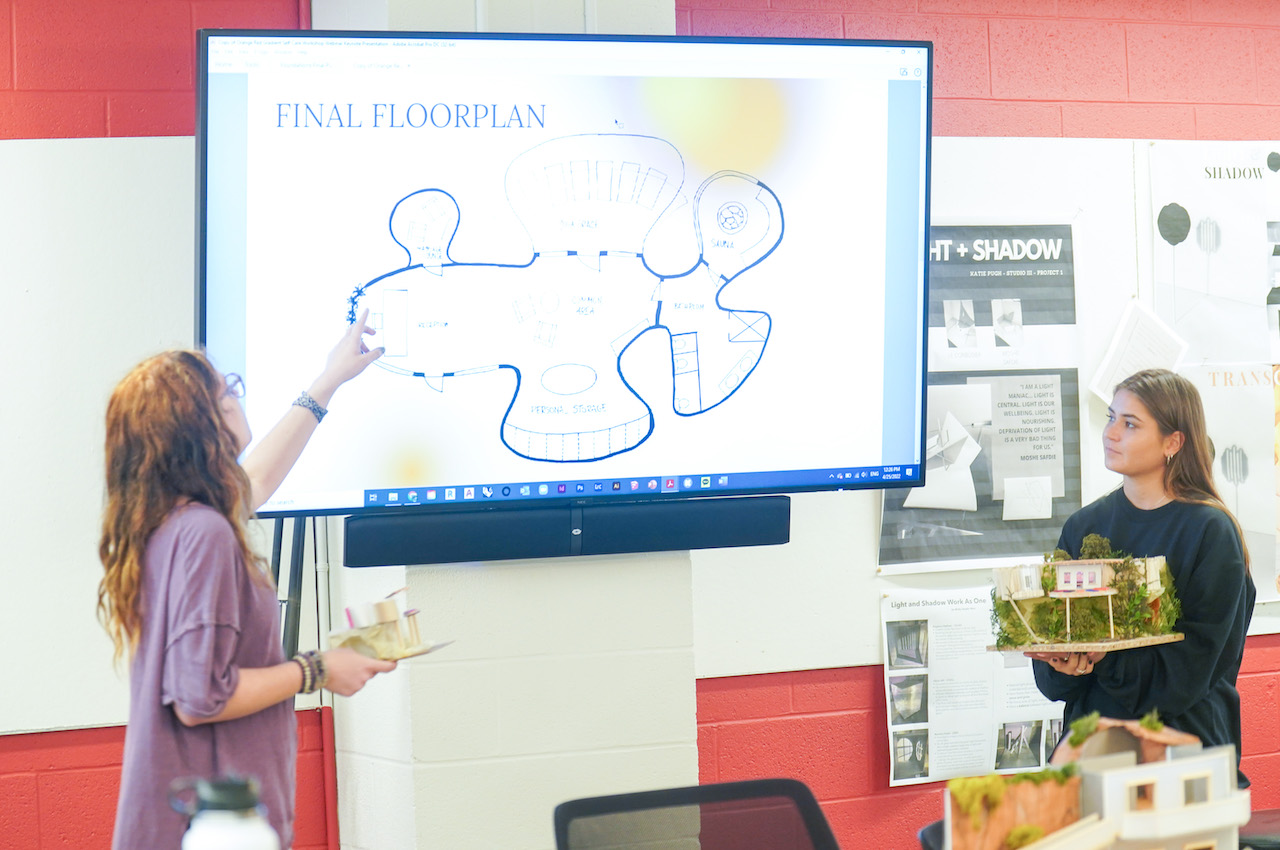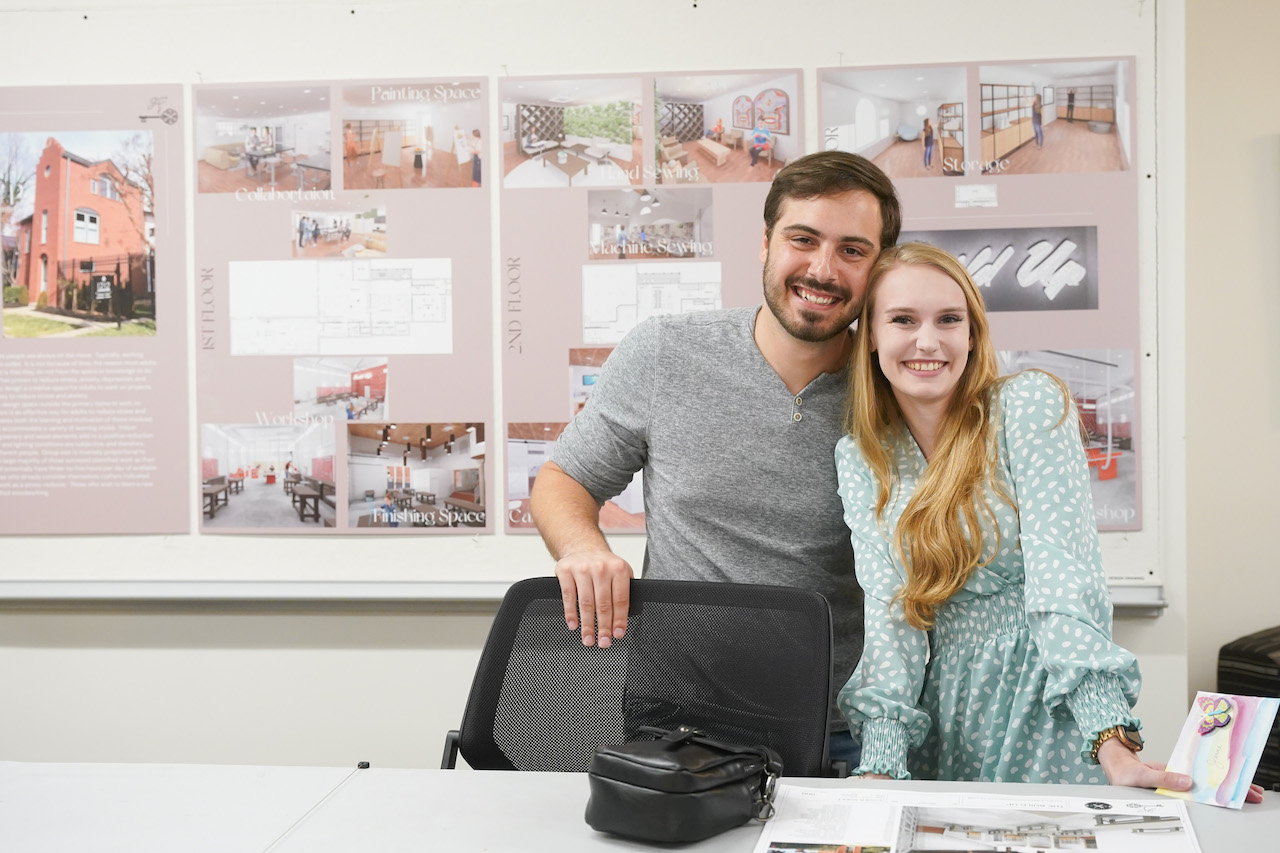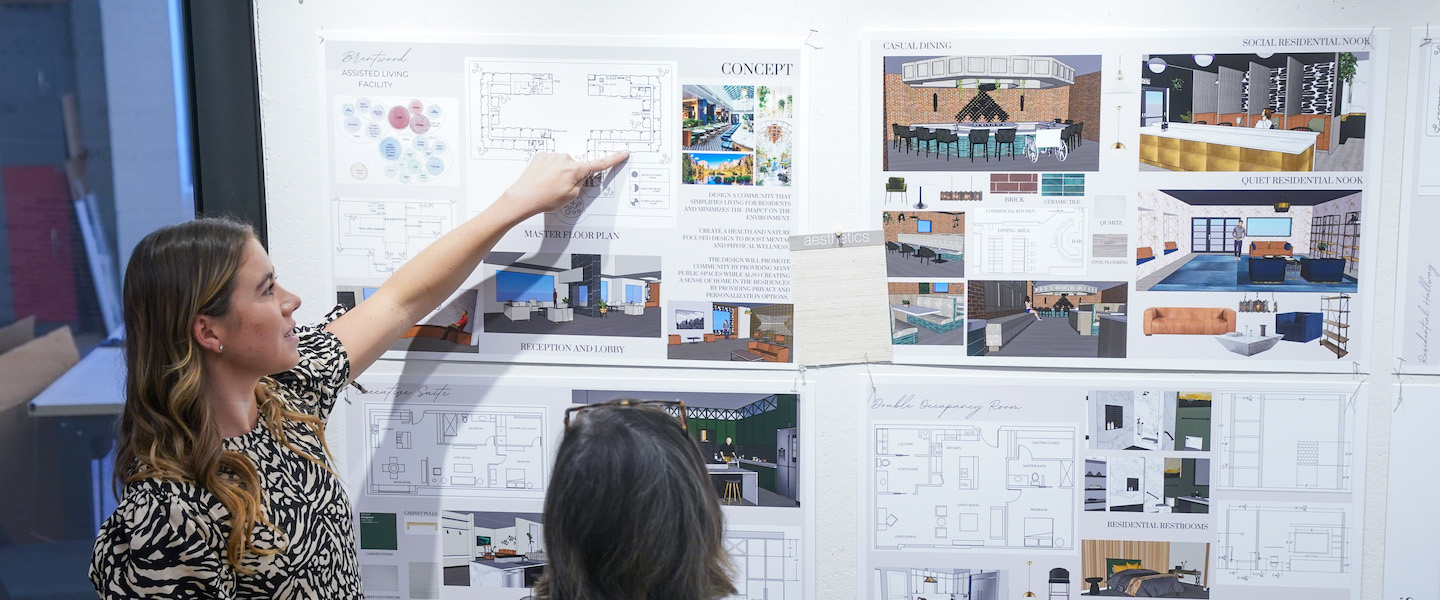Discover lucrative interior design career paths and kickstart your professional journey
Interior design programs equip graduates with an array of business and creative skills that can be useful across various fields and industries, including furniture design, architectural technology and education. This page outlines the bachelor of fine arts careers you can pursue and how to get started.

Careers That Rely on Interior Design Skills
If you’re interested in interior design and considering pursuing it as a career, you might first wonder, “What can I do with an interior design degree?” The good news is that the field opens up a world of diverse employment options, including the following:
1. Interior Designer
Interior design skills are a requirement for an interior designer role, whether the job focuses on commercial or residential spaces. Both aim to create functional and visually appealing spaces. However, the task differs significantly in each of those sectors.
Commercial interior design focuses on creating aesthetically pleasing, functional and well-designed spaces that support the business's goal (such as welcoming customers and guests or providing enough space for products). On the other hand, residential interior designers focus on designing an interior that meets the needs, tastes and comfort of clients (such as developers and realtors) and purchasers (like individuals or families).
2. Hospitality Designer
Interior design skills are also indispensable for hospitality interior designers. This job requires you to design an interior that can provide an optimal customer experience. You may also need to help a hospitality company create a cohesive brand identity that extends across all aspects of the business.
3. Product Designer
Product designers are responsible for making conceptual designs for manufactured goods. They create products based on customers' and clients' demands and intended use. These artists prepare sketches, blueprints, illustrations and artworks of products. Their tasks also include refining and modifying designs to meet client requirements.
Additionally, product designers must assess the viability of design concepts. They perform inspections while considering budget, market, function, safety, serviceability and aesthetics.
4. Furniture Designer
Furniture designers design mass-produced or hand-crafted furniture for commercial, industrial and residential uses. They work with customers to understand the required product and deliver the right design. They usually plan their designs using specialized computer programs or sketch their ideas on paper. Furniture designers also test their design items. This ensures they are comfortable, useful and visually appealing.
5. Exhibit Designer
For fans of the arts, one of the bachelor of fine arts degree jobs to consider is an exhibit designer. Exhibit designers conceptualize, create and execute exhibitions and displays for public venues. This includes museums, galleries and trade shows. Their work conveys information to visitors through an appealing and cohesive presentation.
Exhibit designers collaborate with stakeholders, such as clients and curators, to ensure they have a solid grasp of the exhibition's theme, content and goals. They also conduct in-depth research to compile pertinent data and relics, which they use to create a seamless and captivating story.
6. Event Designer
Event planners are in charge of organizing, designing and decorating events. They manage conferences, business gatherings, birthdays, weddings and private parties. They establish the mood of events by selecting the performers, food, drinks, décor, lighting and other visual elements. Event designers organize the design and arrangement of the event space within a venue. They supervise personnel during setup and also manage cleanup following the event.
7. Architect
Although architects differ from interior designers, the latter can transition into the former. Architects create the style of homes, buildings and other structures. They ensure that the end product is aesthetically pleasing, functional and compliant with relevant building codes.
In terms of interior design, architects are in charge of creating the building's internal structure, adding features like lighting, ergonomics and lifts. They are also involved in decision-making related to interior materials, colors and finishes. In addition, they have a hand in building plumbing, ventilation, lighting and electrical structures.
8. Graphic Designer
With additional training in typography and related digital software, graphic design may be a potential career path for interior design graduates who are passionate about shaping the visual aspects of projects, like product packaging, books and websites.
Graphic designers create visual concepts for customers and businesses. They are creative, use computer-aided design tools and possess drawing skills, many of which you can learn and hone in various interior design courses.
Graphic design is in demand due to the increasing need for visual communication in many industries, such as media, marketing and advertising.
Remember that the answer to the question "What can you do with an interior design degree?" isn't limited to this list. There are many other career paths to take, so don't be afraid to explore!

How to Get Started on Your Interior Design Journey
Interior design is a versatile skill that can afford you many career opportunities. If you’re interested in bachelor of fine arts jobs focusing on interior design, here are some tips to get you started.
The Right Education and Training
To start an interior design career, find colleges that offer accredited and comprehensive interior design programs. Apply for an interior design (BFA) program that will provide you with the necessary creative and technical skills to succeed in an interior design career. In the program, you will methodically pick up practical knowledge that you will need in the future, including lighting, color psychology, traffic flow and space planning.
You can also earn relevant interior design certifications to become more skilled and stand out. Try getting a certification from the National Council for Interior Design Qualification (NCIDQ). NCIDQ certification shows you understand public welfare, health and safety regulations. Other certifications, such as the National Association of Home Builders (NAHB), are available. You can also get one from The American Academy of Healthcare Interior Designers (AAHID).

Building a Portfolio
Your portfolio is your most valuable resource after graduating from interior design school. Add your best works that highlight your abilities and aesthetics. This includes design projects, renderings, sketches and other creative projects.
Consider internships or entry-level positions in interior design companies or similar businesses. This will help you get real-world experience and pick the brains of industry experts. Seek employment opportunities in furniture, real estate, architecture and interior design firms. You can find job listings on websites such as Indeed and LinkedIn and on niche job boards catering to the design industry.
Creating Connections
Building connections in the creative industry is crucial; the chances of landing an interior design job increase with the number of people you know. A wider network will also give you more chances to establish your credentials as an interior designer. If your social or professional circle is small, you must find new ways to build your network and elevate your profile.
Get involved in your industry by speaking at or attending events. You can also join professional associations and interact with people online. Developing relationships also means expanding your offerings. Strive to proactively establish a network of partners and suppliers. They can help you provide a greater range of services and meet various project requirements.

Continuous Learning
Interior design and adjacent fields are ever-evolving. Stay apprised of industry trends and innovations. Get specialized courses or certifications in interior decorating, CAD software or sustainable design to prove to prospective employers that you are dedicated to lifelong learning and development.
Embark on a Rewarding Career in Interior Design by Choosing the Right College
Are you ready to hone your interior design and other creative skills? Belmont University offers minors and majors across bachelor in fine arts (BFA) and bachelor of arts (BA) degrees that prepare creative minds to succeed in the career paths they want to take.
Want to learn more about design at Belmont?

